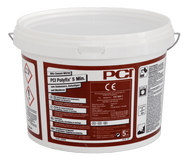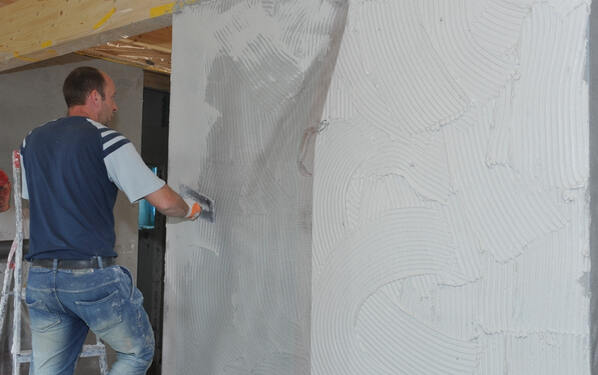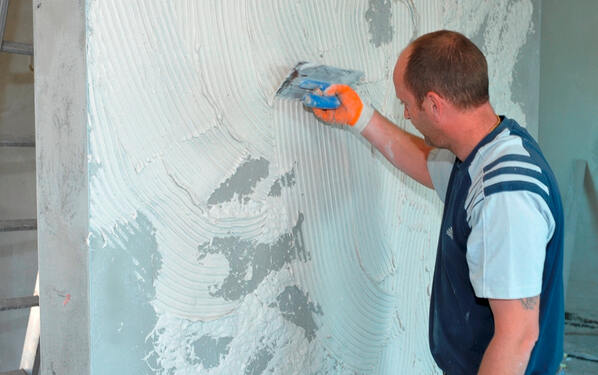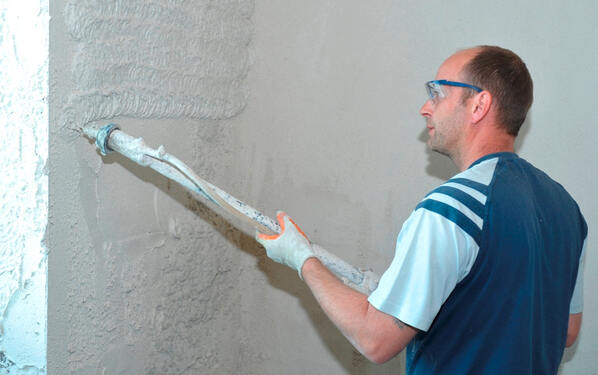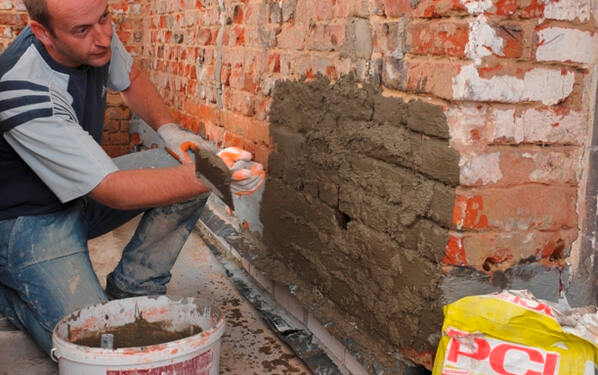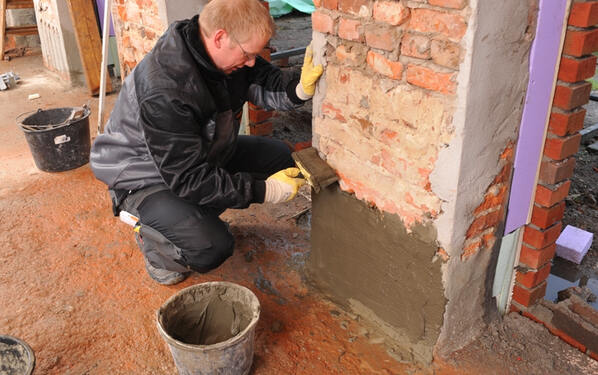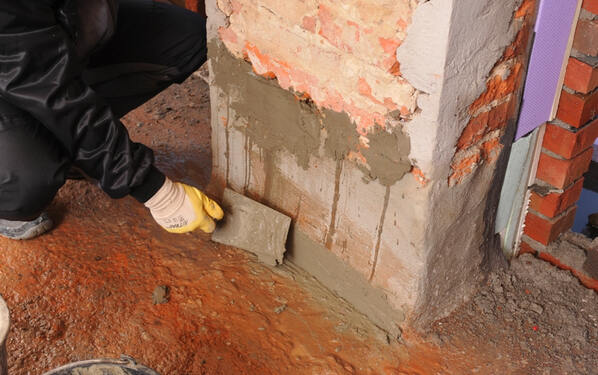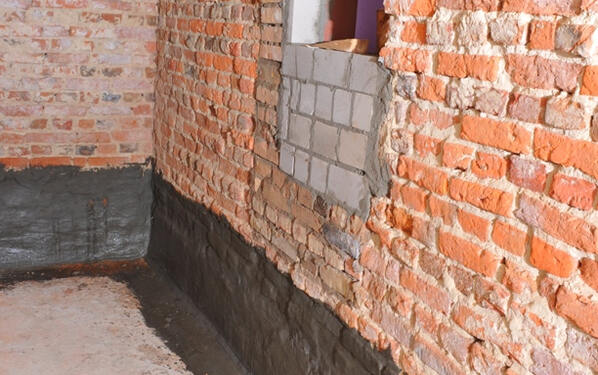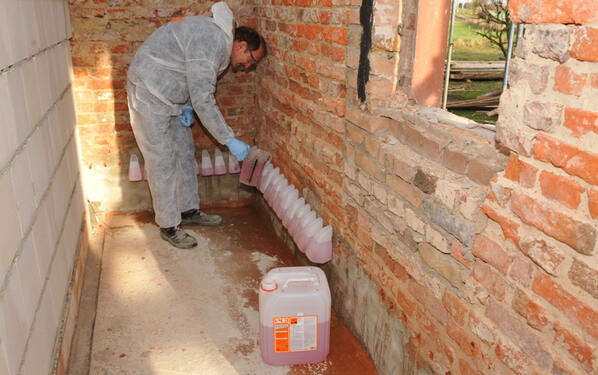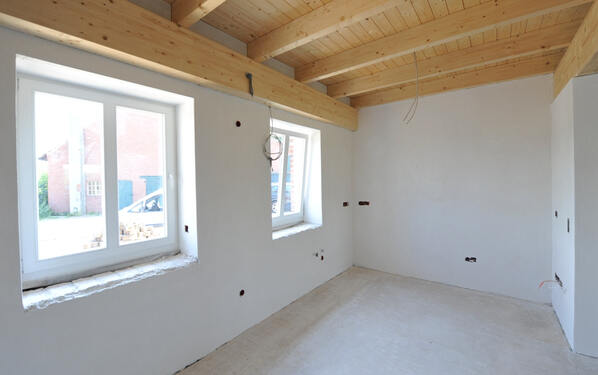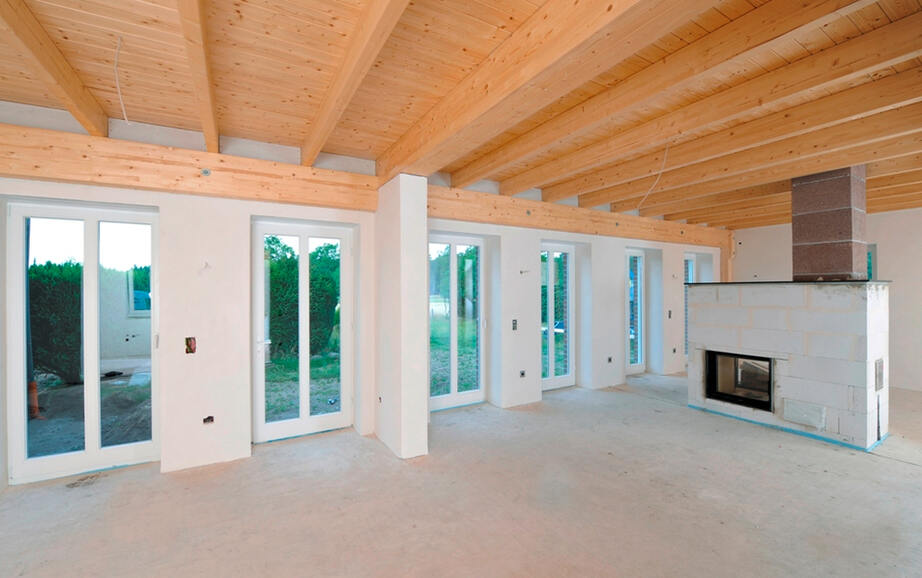
New living space on former farm
Refurbishment of salt-contaminated masonry
Produktanvendelse
New living space on former farm
Refurbishment of salt-contaminated masonry
The ground floor rooms of a former farm house, built in 1960, were to be renovated so that they could be used as living space. So the private owner of the old building contracted the architect’s office Buß und Kaling in Borken, Germany, to do the planning work. They asked Application Technology of PCI Augsburg GmbH for their support, who first made a damage assessment of the condition of the walls. It became clear right from the start that the masonry was contaminated by salt.
It is commonplace that penetrating dampness can provoke all kinds of damages, in particular, if it carries readily soluble salts that have accumulated in the masonry over the years. Damp spots, scum, scaly paints or plaster peeling off the walls are external signs that can be found in many buildings in need of renovation. A long-lasting refurbishment is not only good for the inhabitants’ health but is also a precondition for an agreeable indoor temperature, it conserves the durability of the building fabric and saves energy.
In spite of this widely spread problem, building owners nowadays are faced with a confusing multitude of renovation methods and providers. So amongst non-professionals, the sustainable restoration of such damages is considered very problematic.
As many times before, the architects, the building association Terhaar Baugesellschaft und Altbausanierungen GmbH located in Ahaus/Germany and the plastering company Michael Hesse Putzarbeiten from Schermbeck/Germany relied on the comprehensive service of the PCI local salesmen and application technology specialists when realizing this building project. First, they checked the elaborated proposals for refurbishment in accordance with the WTA (Wissenschaftlich Technischer Arbeitskreis) [work group for scientific and technical matters] code of practice no. 4-5-99 and analysed plaster samples. Then they demonstrated how to apply the special PCI system products for renovation and briefed the operatives accordingly. All in all, they provided their valuable experiences throughout the whole process.The ground floor rooms of a former farm house, built in 1960, were to be renovated so that they could be used as living space. So the private owner of the old building contracted the architect’s office Buß und Kaling in Borken, Germany, to do the planning work. They asked Application Technology of PCI Augsburg GmbH for their support, who first made a damage assessment of the condition of the walls. It became clear right from the start that the masonry was contaminated by salt.
It is commonplace that penetrating dampness can provoke all kinds of damages, in particular, if it carries readily soluble salts that have accumulated in the masonry over the years. Damp spots, scum, scaly paints or plaster peeling off the walls are external signs that can be found in many buildings in need of renovation. A long-lasting refurbishment is not only good for the inhabitants’ health but is also a precondition for an agreeable indoor temperature, it conserves the durability of the building fabric and saves energy.
In spite of this widely spread problem, building owners nowadays are faced with a confusing multitude of renovation methods and providers. So amongst non-professionals, the sustainable restoration of such damages is considered very problematic.
As many times before, the architects, the building association Terhaar Baugesellschaft und Altbausanierungen GmbH located in Ahaus/Germany and the plastering company Michael Hesse Putzarbeiten from Schermbeck/Germany relied on the comprehensive service of the PCI local salesmen and application technology specialists when realizing this building project. First, they checked the elaborated proposals for refurbishment in accordance with the WTA (Wissenschaftlich Technischer Arbeitskreis) [work group for scientific and technical matters] code of practice no. 4-5-99 and analysed plaster samples. Then they demonstrated how to apply the special PCI system products for renovation and briefed the operatives accordingly. All in all, they provided their valuable experiences throughout the whole process.
It is commonplace that penetrating dampness can provoke all kinds of damages, in particular, if it carries readily soluble salts that have accumulated in the masonry over the years. Damp spots, scum, scaly paints or plaster peeling off the walls are external signs that can be found in many buildings in need of renovation. A long-lasting refurbishment is not only good for the inhabitants’ health but is also a precondition for an agreeable indoor temperature, it conserves the durability of the building fabric and saves energy.
In spite of this widely spread problem, building owners nowadays are faced with a confusing multitude of renovation methods and providers. So amongst non-professionals, the sustainable restoration of such damages is considered very problematic.
As many times before, the architects, the building association Terhaar Baugesellschaft und Altbausanierungen GmbH located in Ahaus/Germany and the plastering company Michael Hesse Putzarbeiten from Schermbeck/Germany relied on the comprehensive service of the PCI local salesmen and application technology specialists when realizing this building project. First, they checked the elaborated proposals for refurbishment in accordance with the WTA (Wissenschaftlich Technischer Arbeitskreis) [work group for scientific and technical matters] code of practice no. 4-5-99 and analysed plaster samples. Then they demonstrated how to apply the special PCI system products for renovation and briefed the operatives accordingly. All in all, they provided their valuable experiences throughout the whole process.The ground floor rooms of a former farm house, built in 1960, were to be renovated so that they could be used as living space. So the private owner of the old building contracted the architect’s office Buß und Kaling in Borken, Germany, to do the planning work. They asked Application Technology of PCI Augsburg GmbH for their support, who first made a damage assessment of the condition of the walls. It became clear right from the start that the masonry was contaminated by salt.
It is commonplace that penetrating dampness can provoke all kinds of damages, in particular, if it carries readily soluble salts that have accumulated in the masonry over the years. Damp spots, scum, scaly paints or plaster peeling off the walls are external signs that can be found in many buildings in need of renovation. A long-lasting refurbishment is not only good for the inhabitants’ health but is also a precondition for an agreeable indoor temperature, it conserves the durability of the building fabric and saves energy.
In spite of this widely spread problem, building owners nowadays are faced with a confusing multitude of renovation methods and providers. So amongst non-professionals, the sustainable restoration of such damages is considered very problematic.
As many times before, the architects, the building association Terhaar Baugesellschaft und Altbausanierungen GmbH located in Ahaus/Germany and the plastering company Michael Hesse Putzarbeiten from Schermbeck/Germany relied on the comprehensive service of the PCI local salesmen and application technology specialists when realizing this building project. First, they checked the elaborated proposals for refurbishment in accordance with the WTA (Wissenschaftlich Technischer Arbeitskreis) [work group for scientific and technical matters] code of practice no. 4-5-99 and analysed plaster samples. Then they demonstrated how to apply the special PCI system products for renovation and briefed the operatives accordingly. All in all, they provided their valuable experiences throughout the whole process.
Dato
28.10.2010
Opgave
-
By
Schermbeck
Udførelse
2010
Produktanvendelse
PCI Polyfix® 5 Min., PCI Saniment® HA, PCI Bohrlochsperre, PCI Saniment DP, PCI Saniment DS, PCI Bohrlochsuspension, PCI Saniment Super, PCI Saniment FP,
Firma
Michael Haese Putzarbeiten, Schermbeck
General contractor
Terhaar Baugesellschaft und Altbausanierungen GmbH, Ahaus
Architect
Buß und Kaling Architekten und Igenieure, Borken
Din kontaktperson for spørgsmål:
PCI Augsburg GmbH
Piccardstraße 11, 86159 Augsburg
Telefon: 0821 5901-0
Telefax: 0821 5901-416
E-Mail: pci-info@pci-group.eu
www.pci-augsburg.de

